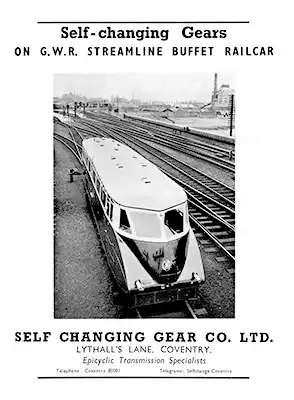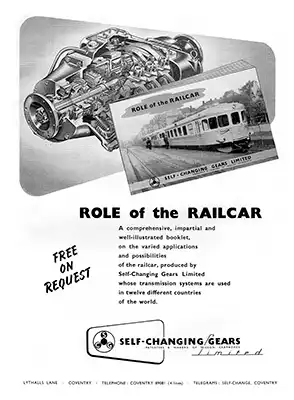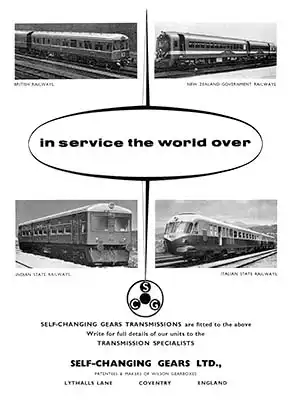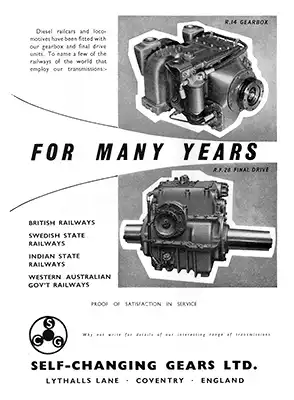Self-Changing Gears Limited
Introduction
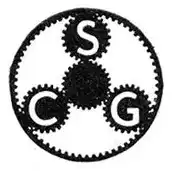
The company provided equipment for the majority of the First Generation DMU fleet.
Most vehicles with mechanical transmission used one of two types of SCG gearboxes: the R14 for vehicles with 150hp engines; and the SE4 for those with larger engines. They also supplied the fluid flywheels which were fitted to the engines on vehicles with gearboxes.
Their RF28 final drive (a reversing gearbox) was used on many vehicles with engines larger than 180hp, regardless of transmission type.
Many of the railbuses were fitted with R11 or R14 gearboxes. A couple of Class 114 power cars had SE3 gearboxes, SCG DF torque convertors and variable speed control equipment. SCG auto gear change was trialled on Derby Lightweight M79135.
History
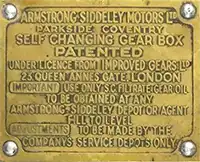
The company started out as Improved Gears Limited in 1928 formed by Major Walter Gordon Wilson when he created what became known as the Wilson Epicyclic Gearbox. He is also credited as the co-inventor of the tank. An equal partner in the company was John Davenport Siddeley of Armstrong Siddeley Motors, and these cars would have self changing gearboxes under license from Improved Gears Ltd as seen on the data plate.
At some point they changed their name to Self-Changing Gears, their gearboxes were used in road vehicles, motor racing cars, amd in military, marine and rail applications — the latter starting as far back as the AEC railcars. They'd be used in Class 03 and 04 shunters and rail use continued with some of the second generation DMUs.
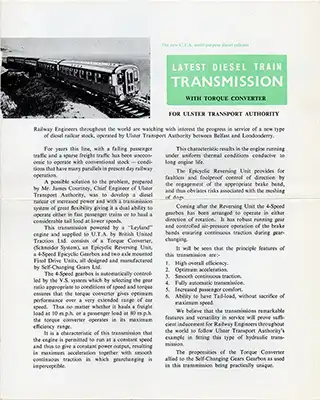
In the early 1950s Leyland bought into the company and by the end of the decade it was the major shareholder — this no doubt led to their close association with British United Traction (BUT) and the inclusion of their items being supplied as part of the BUT power equipment packages.
The page to the right is thought to be from their company journal. This PDF (1.2mb) contains more, all possibly from the September 1958 edition. Sadly none of these pages relate to British Railways First Generation DMUs.
Company Histories:
Wikipedia
Grace's Guide
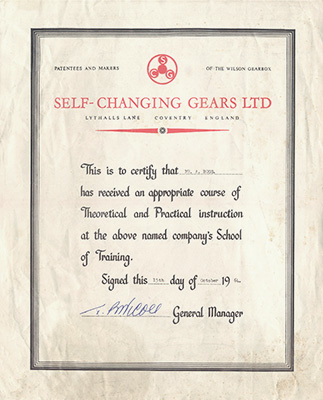
Training
British Railways would, as part of its training of maintenance staff, send employees to manufacturers of mechanical components to attend their in-house training courses.
Pictured is a certificate issued by Self-Changing Gears to Alan Ross, a fitter at Workington depot, after completing a course at the SCG School of Training.
Adverts
Some examples of company advertisements relating to DMUs.
More adverts can be found on the Railway Adverts website.
Promotional booklets
Two booklets that look at the company's involvement with railcars at home and abroad. The booklets were free to whoever wrote asking for one, this is an example of the accompanying letter that came with them.
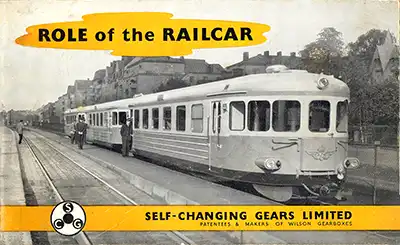
Download PDF (4.3mb)
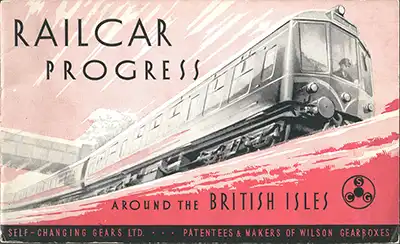
Download PDF (4mb)
A Simple Explanation
A 9" x 5 1/2" booklet that explains how the Wilson Epicylic gearbox works. The content of these two are identical, they just use different colours.
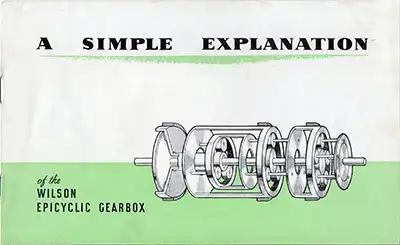
Download PDF (1mb)
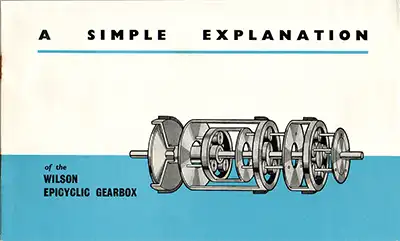
Download PDF (1mb)
Product Brochures
A few samples of pamphlets promoting their range, not all were used on DMUs. They measured 8" x 10".
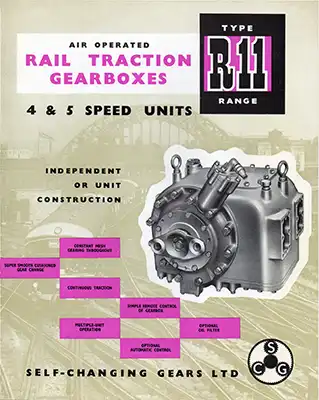
R11 gearbox
PDF Download (1mb)
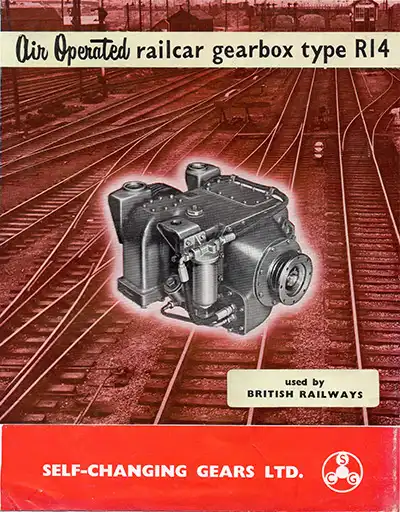
R14 gearbox
PDF Download (3mb)
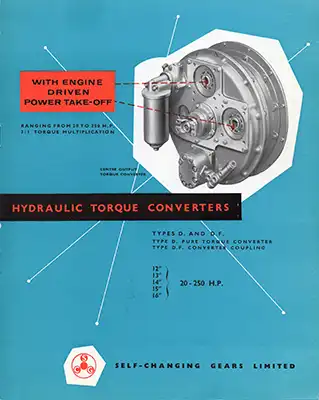
Torque Converter
PDF Download (1.3mb)
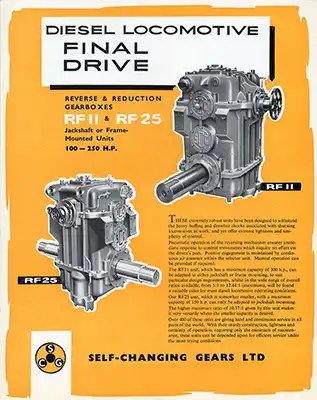
RF11 RF25 final drives
PDF Download (1mb)
Some more examples can be found in this flickr album.
Self-Changing Gears
Introduction
Manuals
Other suppliers
BeclawatBUT
Cor-ten Steel
Gresham & Craven
Hardy Spicer
Ronald Trist
Self-Changing Gears
Timken



